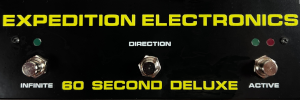Showing posts sorted by date for query Voltage Controlled. Sort by relevance Show all posts
Showing posts sorted by date for query Voltage Controlled. Sort by relevance Show all posts
Tuesday, December 23, 2025
Graphic Score Distribution! | Make Noise
video upload by MAKEN0ISE
"Using the classic Voltage Controlled Lottery Machine to distribute visual scores for the (final?) iteration of the 12 String Iterative Music Project.
Also, a shout-out to the N.U.S.S. video manual, and a Big Three patch from Pete!
http://www.makenoisemusic.com"
Thursday, December 18, 2025
Tre Modular - Permida Demo
video upload by Tre Modular
"Permida is a versatile analog utility module designed to unlock new routing and control possibilities in your Eurorack system.
With three core functions: Voltage-Controlled switch (Selector), Sequential Switch, and Max Value Comparator. Permida gives you as much manual and CV controlled creativity as would fit in a 10hp module.
Whether you’re shaping modulation, sequencing signals, or comparing audio paths, Permida is built to inspire experimentation.
More info: www.tremodular.com"
Also see Tre Modular - Permida (First look)
Sunday, December 14, 2025
Roland MC-8 Microcomposer and MC-8 Interface
Note: links to listings are affiliate links for which the site may be compensated.
via this Reverb listing
via this Reverb listing
Wednesday, December 10, 2025
Introducing Soft Memo by Herbs and Stones
video upload by Herbs and Stones
"Soft Memo is a stereo hybrid multi effects desktop unit.
Eight digital CV controlled FX programs, two analog feedback paths, two complex VCLFOs."
Soft Memo - Eight programs overview
video upload by Herbs and Stones
"Dry / wet comparison of a drum loop treatment by Soft Memo
00:00 Twin Gorge - dual drifting delay
00:25 Faux Mirrors - lo-fi reverse time processor
00:50 Empty Shell - shimmering feedback delay
01:16 Fixed Thoughts - double pitched freeze reverb
01:41 Grotto Divide - stereo crossfade reverb
02:05 Rival Choir - freeform stereo chorus
02:29 Mood Swings - drifting stereo pitch shifter
02:54 Late Rings - dual ring modulator w/ tempo offset
https://herbs---stones.com/soft-memo/"
Soft Memo is a hybrid stereo multi effects desktop unit with eight digital CV controlled FX programs, two analogue feedback paths and two complex voltage-controlled LFOs.
 It has patch points to integrate external synthesisers and sequencers and it is designed to creatively reshape your sounds with a menu-free hands-on approach.
It has patch points to integrate external synthesisers and sequencers and it is designed to creatively reshape your sounds with a menu-free hands-on approach.
You can create patches by connecting inputs and outputs with eurorack-standard 1/8" jacks.
All its inputs are protected from potentially dangerous voltages.
It generates (and reacts to) control voltages in the 0-5V range: when a CV signal is patched into an input, its knob becomes an attenuator for the incoming signal.
The patch points are visually divided between inputs and outputs: the inputs are placed in the middle of a white circle while the outputs are not.
Soft Memo is powered by a 9V center-negative (500 mA) power supply, the standard PSU used with most guitar pedals.
Features:
Eight FX programs
A total of 25 patch points
Two high gain preamps
Two feedback paths made of analog VCAs and resonant analog VCFs
Two complex voltage controlled LFOs with clock division and phase offset control
An envelope follower
A→B buttons to set how the two channels controls interact with each other"
Friday, December 05, 2025
Tre Modular - Permida (First look)
video upload by Tre Modular
"Meet Permida, our brand‑new triple switch module for Eurorack. Permida packs three different 4‑channel switching circuits into 10hp module:
Voltage‑controlled selector – choose between four inputs with CV or Select potentiometer.
Sequential switch – step through channels in rhythm with your patch.
Maximum value selector – route whichever signal is strongest at any given moment.
More info upon release."
Thursday, December 04, 2025
Gene CHROMAGENE - First Look
video upload by Gene Synths





"Pre-order at http://genesynths.com
Sound recorded directly from the back of the synth (No added effects / eq / reverb etc).
CHROMAGENE is an all analog, stereo polyphonic synthesizer with two halves. One half is an 8 voice 2 VCO polysynth where every oscillator can be tuned independently or transposed together, the other half is a polysynth that uses the Ring Modulated output of each pair of oscillators as its signal source.
This wide range of sound sources along with two analog filters and an on-board sequencer give Chromagene a wide palette of tones and textures.
Inspired by the earliest polysynths of the 1970s, it is fully polyphonic
(all 16 notes can be played at the same time), can be tuned to any scale or tuning,
is multi-timbral and touch sensitive.
The instruments key contacts are Immersion Gold plated and non-corrosive.
At the top, there are 16 tuning controls for the 8 pairs of oscillators. Each tuning control has a momentary pitch bend touch sensor below, so you can articulate each note individually. The top row of tuning controls (VCO-1) also shifts the oscillator below it, but the second row of tuning controls are independent. This allows you to preserve the tonal relationship by using the top tuning controls, or change it by detuning VCO-2.
These tuning controls allow you to tune the 8 pairs of oscillators to any scale, from a standard equal tuning to any microtonal, non-western or even unison tuning.
VCO-1 has a Pulse Width Modulation control and each set of oscillators has a master tuning control and an individual LFO control.
The 8 analog ring modulators take the VCO signals and multiply their output. VCO-2 is converted to a triangle pre-ring-modulator so that the ring modulated signal is fully continuous and not binary like pseudo-ring-modulators in some synths. This means you can create virtually any waveform by carefully tuning the input VCOs, and an endless variety of tones can be generated for each note individually.
The two filters, which can be panned from mono to full stereo using the panning control, are all-analog all-transistor low-pass VCFs, with individual cutoff, resonance and envelope-mod controls. The envelope amount controls go from negative (inverted) to positive. VCF-1 has mixer controls for VCO-1 and 2, and VCF-2, which is for the Ring modulated notes, has LFO cutoff modulation and Panning.
The 16 independent envelope generators have Attack, Decay, Sustain and Release controls.
The sequencer can be internally or externally clocked. Custom sequencer configurations can be set up, get in touch.
The synthesizer is built into a hand-made wood case.
Specifications
16 note polyphonic, multi-timbral
16 voltage controlled oscillators, tuneable to any scale
8 ring modulators (true ring mod, not xor)
All analog. Class A audio path
2x transistor filters with cutoff, resonance, attack (env mod +/-), lfo/panning controls
16 VC Envelope Generators (Attack, Decay, Sustain, Release)
24 VC Amplifiers (1 per oscillator + 1 per ring modulator)
Oscillator LFO modulation
Pulse Width modulation
Touch-sensitive pitch bends
16-note gold plated touch sensitive keyboard
In built sequencer, internally or externally clocked
2.1mm 9v centre negative power input
Can run on an external standard type 9v battery (please ask for a special adaptor cable if required)
2x 6.35mm (1/4 inch) audio output
6.35mm (1/4 inch) external clock input
27 x 22 x 5 cm
£1,055 special introductory price.
NOTE This is a pre-order. Delivery will be approximately one month after you pre-order (date will be confirmed via email).
Synth uses a standard guitar pedal type power supply (9v tip negative), I no longer include the power supply as I receive orders from lots of different countries, but I am happy to advise on power supply models."
Tuesday, December 02, 2025
Café Quantum
video upload by Patch Point
"By Ciat-Lonbarde"


"When the Cocoquantus2 first appeared, it didn’t just find an audience—it created one. Musicians, experimentalists, producers, and curious tinkerers fell in love with its organic chaos, character, and uncanny ability to turn accidents into art. It became a modern cult instrument because you couldn’t play it without forming a relationship with it.
Café Quantum continues that lineage with reverence—then boldly invents a new chapter.
At its core, Café Quantum preserves the tactile immediacy and playful unpredictability of the Coco ecosystem. But surrounding that familiar heart are entirely new tools designed to make the instrument feel more alive, more intelligent, and more expressive.
One of the biggest leaps is the open-source programmable engine. For the first time, players can write their own behaviors—little sonic personalities— at the Cafe modules, one for each side, and the Quantum module can carry them out by patching points. Whether it’s generative patches, evolving modulation, rhythmic structures, or strange autonomous rituals, the instrument becomes a creative partner. And thanks to the dedicated banana sockets, these behaviors integrate directly into the patch ecosystem. The Cafe module becomes a blank page for your imagination, shaped as far as your coding skills can carry you
The preamp has grown up too. Now it features a Norton gain character and adds a VCA input, making external dynamics, sidechaining, and voltage-controlled level manipulation feel effortless. On top of the newly redesigned preamp features you still have the envelope follower that opens the door to all sorts of expressive interactions between incoming audio and internal modulation.
Then comes the new magic trick:
A radio-based gestural controller sits atop the entire system, allowing 4 hands-free modulation reminiscent of a theremin. Move in space, and the instrument responds—pitch, delay time, grain density, feedback paths, whatever you choose. It transforms performance from knob-twisting to full-body expression."
Monday, December 01, 2025
Dieter Doepfer explains the 3D Joystick
video upload by Doepfer Musikelektronik GmbH
"Dieter Doepfer explains the 3D Joystick"
The A-174-4 made its first appearance on the site back in 2020. The following are some pics and details via https://doepfer.de/a1744.htm.


"Module A-174-4 generates several control voltages and a gate signal controlled by a spring-loaded X/Y cross potentiometer (so-called joy stick). The control voltages for X and Y are controlled by the X and Y position of the joystick in the usual way. The third control voltage Z is controlled by the rotation of the spring-loaded joystick knob. The gate signal is generated by a button at the center/top of the joystick knob. As an additional feature four control voltages are generated that are assigned to the quadrants of the Cartesian coordinate system. These quadrant voltages are derived from the X and Y voltages by means of a special algorithm.
For each joystick function the non-inverted signal (X, Y, Z) as well as the inverted signal (-X, -Y, -Z) is available. The generic joystick control voltages are bipolar and range from typ. -5V (lowest position) via 0V (center position) to typ. +5V (highest position). By means of the Offset controls OX, OY and OZ a variable voltage of up to 5V can be added to the generic voltages. That way it's possible that the X, Y and Z outputs become pure positive (0...+10V instead of -5V...+5V). That's necessary if e.g. VCAs have to be controlled, because VCAs require a pure positive control voltage. The offset voltages can be adjusted by means of three small potentiometers. When the control in question is fully CCW no offset is added and the "pure" control voltages X, -X, Y, -Y, Z and -Z without offset are generated. As soon as the offset control in question is moved clockwise up to +5V are added to the voltage in question. The offset voltages are also added to the inverting outputs. With max. offset the range of an inverted output becomes also pure positive (+10V...0V instead of +5V...-5V). These six voltages are output at the sockets "X+OX", "-X+OX", "Y+OY", "-Y+OY", "Z+OZ" and "-Z+OZ". Each of these outputs is equipped with a dual color LED (red/yellow) that displays the present voltage and allows to distinguish between positive (red) and negative (yellow) voltages.
Sunday, November 30, 2025
SEQUENTIX CIRKLON & CV BREAKOUT DESKTOP SEQUENCER
Note: links to listings are affiliate links for which the site may be compensated.
via this listing
Additional Signal Sounds listings
"A pre-owned Sequentix Cirklon & CV Breakout in very good condition. It comes with the expander cable, power supply and original manual.
Manufacturer's description
The Cirklon Mk1 is a dedicated hardware sequencing workstation designed for precise, real-time control of MIDI, USB-MIDI, and analogue systems. Built around a high-resolution encoder interface and a structured pattern engine, the Mk1 provides tight timing, flexible routing, and a streamlined workflow for complex setups.
This unit ships with the CVIO breakout expander, offering sixteen analogue control voltage outputs and eight gate outputs for direct integration with modular and other voltage-controlled instruments. The CVIO system delivers calibrated, low-latency analogue control suitable for demanding studio environments."
via this listing
Additional Signal Sounds listings
"A pre-owned Sequentix Cirklon & CV Breakout in very good condition. It comes with the expander cable, power supply and original manual.
Manufacturer's description
The Cirklon Mk1 is a dedicated hardware sequencing workstation designed for precise, real-time control of MIDI, USB-MIDI, and analogue systems. Built around a high-resolution encoder interface and a structured pattern engine, the Mk1 provides tight timing, flexible routing, and a streamlined workflow for complex setups.
This unit ships with the CVIO breakout expander, offering sixteen analogue control voltage outputs and eight gate outputs for direct integration with modular and other voltage-controlled instruments. The CVIO system delivers calibrated, low-latency analogue control suitable for demanding studio environments."
Monday, November 24, 2025
Tobinksi Standalone Mono Synth
Note: links to listings are affiliate links for which the site may be compensated.
via this Reverb listing
"Only a handful made. Tobinski mono Synth (formerly Danny sound). Sounds incredible. Everything works accept 1 led needs changing. Comes in its own carry case. Cables included.
Modules overview:
OSC 1- Electronotes EN129 Linear Through Zero Oscillator
OSC 2 -Buchla 258 Oscillator
ENVELOPE 1 - Roland M140 Envelope Generator
ENVELOPE 2 - Electronic Dream Plant (EDP) Wasp Filter Control Envelope
ENVELOPE 2 Electronic Dream Plant (EDP) Wasp Filter Control Envelope
ENVELOPE 3 Electronic Dream Plant (EDP) Wasp VCA Envelope
TIMBRE (TMBR) Buchla 259 Timbre Generator Module
LOW PASS GATE (LPG) Buchla 292 Low Pass Gate Module
LOW PASS FILTER (LPF) Moog MiniMoog Low Pass Filter Module
VOLTAGE CONTROLLED AMPLIFIER (VCA) Moog MiniMoog Voltage Controlled Amplifier
MIDI TO CV Oakleysound 3031 midi to CV"
Note this appears to be the first post to feature Tobinksi.
via this Reverb listing
"Only a handful made. Tobinski mono Synth (formerly Danny sound). Sounds incredible. Everything works accept 1 led needs changing. Comes in its own carry case. Cables included.
Modules overview:
OSC 1- Electronotes EN129 Linear Through Zero Oscillator
OSC 2 -Buchla 258 Oscillator
ENVELOPE 1 - Roland M140 Envelope Generator
ENVELOPE 2 - Electronic Dream Plant (EDP) Wasp Filter Control Envelope
ENVELOPE 2 Electronic Dream Plant (EDP) Wasp Filter Control Envelope
ENVELOPE 3 Electronic Dream Plant (EDP) Wasp VCA Envelope
TIMBRE (TMBR) Buchla 259 Timbre Generator Module
LOW PASS GATE (LPG) Buchla 292 Low Pass Gate Module
LOW PASS FILTER (LPF) Moog MiniMoog Low Pass Filter Module
VOLTAGE CONTROLLED AMPLIFIER (VCA) Moog MiniMoog Voltage Controlled Amplifier
MIDI TO CV Oakleysound 3031 midi to CV"
Note this appears to be the first post to feature Tobinksi.
Thursday, November 20, 2025
219 playtime
video upload by Todd Barton
"Just a brief exploration of the Buchla 219 Compound Touch Controlled Voltage Source https://www.perfectcircuit.com/source...
with Soundfreak EMS Triple Oscillator https://www.soundfreak.io/triple-osci...
My Patreon: / synthtodd"
Thursday, November 13, 2025
Schlappi 100 Grit, AntiMatter BrainSeed, & BASTL Instruments Dark Matter
Note: links to listings are affiliate links for which the site may be compensated.
Three listings from supporting member brian comnes on Reverb here.
Instruction manuals for 100 Grit & BrainSeed pictured below.
"The 100 grit is a distortion, VCA, and low pass filter module with 8 brass touchpoints.
Features:
8 brass touchpoints
2 inputs to transistor core low pass filter
Voltage control over frequency, resonance, and gain
OTA VCA with soft saturation characteristics
Distortion circuit based around a vintage headphone amplifier driven into instability
Three position x100 gain switch with off, on, and momentary on settings
Each input and cv input is normalled to a different feedback path (6 total)
Seperate outputs for the VCA and distortion
Can operate as a vintage voiced VCA and LPF or a screaming distortion and noise effect
All analog design"
Three listings from supporting member brian comnes on Reverb here.
Instruction manuals for 100 Grit & BrainSeed pictured below.
"The 100 grit is a distortion, VCA, and low pass filter module with 8 brass touchpoints.
Features:
8 brass touchpoints
2 inputs to transistor core low pass filter
Voltage control over frequency, resonance, and gain
OTA VCA with soft saturation characteristics
Distortion circuit based around a vintage headphone amplifier driven into instability
Three position x100 gain switch with off, on, and momentary on settings
Each input and cv input is normalled to a different feedback path (6 total)
Seperate outputs for the VCA and distortion
Can operate as a vintage voiced VCA and LPF or a screaming distortion and noise effect
All analog design"
Sunday, November 09, 2025
Tsunami v0.1 Voltage-Controlled Wave Folder test.
video upload by flightofharmony
"17 minutes of noodling with the almost-ready Tsunami.
two-stage wavefolder, with low and high breakpoints of each stage variable by potentiometers and collectively by a control voltage. Also with voltage-selectable inversion (invert/not invert)of input mix and voltage-selectable (limit/no limit) output limiting.
No editing, just raw upload."
Thursday, November 06, 2025
New SEOK Eurorack Modules - DRIPS, AT, M22, & ROTARIES
SEOK - DRIPS – Voltage Controlled Analog Filter [DEMO no talk]
video upload by SEOK synthesizers
via SEOK Eurorack Modules
DRIPS
A warm and bubbly 12 dB/oct analog Eurorack filter with dual voltage control of frequency. Low-pass, band-pass, and high-pass outputs in one compact 8 hp module.
With external signals, the filter stays soft, clean, and precise. Adding resonance gives a liquid acid tone (like a good filter coffee). When driven into self-oscillation, it produces sine waves perfect for deep bass, kicks, and percussive sounds.
An integrated VCA placed after the filter lets you shape both tone and dynamics in a single path – precise when clean, saturated and raw when pushed.
Raise the offset to move seamlessly from rhythmic sequences to heavy drones.
Background:
We wanted to build a versatile Eurorack VCF/VCA with a balanced function-to-HP ratio. For us, ergonomics are as important as function – it should feel intuitive and spacious around the core controls.
And since we’re from Sweden, we couldn’t resist adding a little warmth.
video upload by SEOK synthesizers
via SEOK Eurorack Modules
DRIPS
A warm and bubbly 12 dB/oct analog Eurorack filter with dual voltage control of frequency. Low-pass, band-pass, and high-pass outputs in one compact 8 hp module.
With external signals, the filter stays soft, clean, and precise. Adding resonance gives a liquid acid tone (like a good filter coffee). When driven into self-oscillation, it produces sine waves perfect for deep bass, kicks, and percussive sounds.
An integrated VCA placed after the filter lets you shape both tone and dynamics in a single path – precise when clean, saturated and raw when pushed.
Raise the offset to move seamlessly from rhythmic sequences to heavy drones.
Background:
We wanted to build a versatile Eurorack VCF/VCA with a balanced function-to-HP ratio. For us, ergonomics are as important as function – it should feel intuitive and spacious around the core controls.
And since we’re from Sweden, we couldn’t resist adding a little warmth.
Yamaha CS01 II Monophonic Synthesizer SN 2341
Note: links to listings are affiliate links for which the site may be compensated.
via this eBay listing
Pics of the inside below.

 "See video [in the listing while up] for working features. The feet switch works but you sometimes have to fiddle with it. I bought this in the late 1980’s so it is firsthand. I have kept it in a dry healthy environment. It was bought in Europe and I checked it in the US using a European plug and a proper power transformer. The internal loudspeaker doesn’t seem to work. In the video I connected it to an external speaker. Batteries didn’t seem to power up the synth. Not sure why, the connexions are clean. Maybe modern alkaline batteries are weaker than the older ones. This looks like a toy but is actually a very powerful and sought after synth.
"See video [in the listing while up] for working features. The feet switch works but you sometimes have to fiddle with it. I bought this in the late 1980’s so it is firsthand. I have kept it in a dry healthy environment. It was bought in Europe and I checked it in the US using a European plug and a proper power transformer. The internal loudspeaker doesn’t seem to work. In the video I connected it to an external speaker. Batteries didn’t seem to power up the synth. Not sure why, the connexions are clean. Maybe modern alkaline batteries are weaker than the older ones. This looks like a toy but is actually a very powerful and sought after synth.
TECHNICAL FEATURES
Improved filter: The CS01 II features a 24dB resonant low-pass filter with an adjustable slider for resonance, a significant upgrade from the 12dB filter with a simple on/off resonance switch on the original model.
Sound generation: It includes a voltage-controlled oscillator with selectable waveforms (triangle, saw, square), pulse width modulation, and a white noise option.
Envelopes and LFO: A single ADSR envelope generator controls both the amplifier and filter depth, and a basic LFO can modulate the VCO pitch or filter cutoff.
Portability: Designed for portability, it has a mini-keyboard, a built-in speaker, and can be powered by batteries.
Controls: It includes pitch and modulation wheels, a glissando (portamento) function, and an input for a breath controller.
The CS01 II is a monophonic synthesizer, meaning it can only play one note at a time.
Sound: It is highly regarded by electronic musicians today for its ability to produce "bubbly and growling" bass sounds and other fat analog tones.
Target audience: While its small size and simplicity made it a good beginner's synth when released, its excellent sound quality has made it a valuable instrument for experienced musicians."
via this eBay listing
Pics of the inside below.

 "See video [in the listing while up] for working features. The feet switch works but you sometimes have to fiddle with it. I bought this in the late 1980’s so it is firsthand. I have kept it in a dry healthy environment. It was bought in Europe and I checked it in the US using a European plug and a proper power transformer. The internal loudspeaker doesn’t seem to work. In the video I connected it to an external speaker. Batteries didn’t seem to power up the synth. Not sure why, the connexions are clean. Maybe modern alkaline batteries are weaker than the older ones. This looks like a toy but is actually a very powerful and sought after synth.
"See video [in the listing while up] for working features. The feet switch works but you sometimes have to fiddle with it. I bought this in the late 1980’s so it is firsthand. I have kept it in a dry healthy environment. It was bought in Europe and I checked it in the US using a European plug and a proper power transformer. The internal loudspeaker doesn’t seem to work. In the video I connected it to an external speaker. Batteries didn’t seem to power up the synth. Not sure why, the connexions are clean. Maybe modern alkaline batteries are weaker than the older ones. This looks like a toy but is actually a very powerful and sought after synth.TECHNICAL FEATURES
Improved filter: The CS01 II features a 24dB resonant low-pass filter with an adjustable slider for resonance, a significant upgrade from the 12dB filter with a simple on/off resonance switch on the original model.
Sound generation: It includes a voltage-controlled oscillator with selectable waveforms (triangle, saw, square), pulse width modulation, and a white noise option.
Envelopes and LFO: A single ADSR envelope generator controls both the amplifier and filter depth, and a basic LFO can modulate the VCO pitch or filter cutoff.
Portability: Designed for portability, it has a mini-keyboard, a built-in speaker, and can be powered by batteries.
Controls: It includes pitch and modulation wheels, a glissando (portamento) function, and an input for a breath controller.
The CS01 II is a monophonic synthesizer, meaning it can only play one note at a time.
Sound: It is highly regarded by electronic musicians today for its ability to produce "bubbly and growling" bass sounds and other fat analog tones.
Target audience: While its small size and simplicity made it a good beginner's synth when released, its excellent sound quality has made it a valuable instrument for experienced musicians."
Monday, November 03, 2025
Synthesizing with Moog | Lesson 4: Original Soundtrack
video upload by Moog Music
Synthesizing with Moog
"The soundtrack from the fourth episode of Synthesizing with Moog invites you to dive deep into one of the synthesizers signature components, the Voltage-Controlled Filter. While different oscillator shapes could create a bed of tone and harmonics, the Voltage-Controlled Filter allowed musicians to sculpt a distinct sound out of all those harmonics and even shape that sound over time.
We hope you enjoy this music created by Moog electronic musical instrument experts Max Ravitz ( / patriciaaa ) and Gunnar Haslam ( @lasynthesehumaine6932 ).
0:00 - Giles Goes to the Movies / Gunnar Haslam
1:58 - Clare / Gunnar Haslam
11:52 - Thomas Elroy / Max Ravitz
15:06 - Broken Traces / Max Ravitz"
Synthesizing with Moog | Lesson 3: Original Soundtrack
video upload by Moog Music
"The soundtrack from the third episode of Synthesizing with Moog invites you to dive deep into 'Vibrations' and their the source on the synthesizer – the oscillator. We also dive into the topics of harmonics, looking at how the shape of oscillation creates distinct tones with different harmonic characteristics.
0:00 - Cosmicmantova / Gunnar Haslam
3:32 - Looking Through a Glass Table / Gunnar Haslam
9:12 - See Ess / Max Ravitz
13:04 - Enola / Max Ravitz
17:12 - Dusk on Karl Marx Strasse / Gunnar Haslam"
Synthesizing with Moog | Lessons
Thursday, October 30, 2025
R.A. Moog Modular IIIC, 1968
Note: links to listings are affiliate links for which the site may be compensated.
via this Vemia listing
Click the auction link on top when you get there for additional listings.
This appears to be the one previously featured here with additinal pics.
via this Vemia listing
Click the auction link on top when you get there for additional listings.
This appears to be the one previously featured here with additinal pics.
Wednesday, October 29, 2025
10/29/25 ARP 1613 + Metasonix R-54 53 52 51 56 + Zerosum ZI61 & VCA + MFB ADSR + OAM + MIDIVERB (…)
video upload by Cfpp0
"10/29/25 ARP 1613 + Metasonix R-54 & 56 & 53 & 52 & 51 + Zerosum Inertia ZI61 & Voltage Controlled Annihilation + MFB ADSR + OAM Time Machine + Alesis MIDIVERB 2
The ARP 1613 sequencer output A controls the Metasonix R-52 sweep CV in, which creates the high resonant rasp on the reversed quarter notes. The R-52 runs into the R-53, which adds the pitch to the R-52 rasp, then through the R-51, controlled by the MFB dual ADSR, gated by the ARP 1613 gate bus 3. This signal goes through the R-56 for more distortion and spring reverb—panned center on the Mackie Onyx 1640, with stereo room reverb from the Alesis MIDIVERB II. Meanwhile, the more mechanical-sounding squawk/chirp/scream loop is the ARP 1613 quantized output B controlling the pitch of the R-54, which runs through the Zerosum Inertia Voltage Controlled Annihilation, which runs through the Zerosum ZI61, high is controlled by the MFB dual ADSR, gated by the ARP 1613 gate bus 3. The ZI61 is panned left on the Mackie, but it also feeds the OAM Time Machine delay, which is panned center on the Mackie.
NTS:
USCIS, windowless"
Synthesizing with Moog | Lesson 4: Resonance
video upload by Moog Music
Synthesizing with Moog
"In 1964 the modular synthesizer was born, and one of its signature components was the Voltage-Controlled Filter. While different oscillator shapes could create a bed of tone and harmonics, the Voltage-Controlled Filter allowed musicians to sculpt a distinct sound out of all those harmonics and even shape that sound over time. A key component in synthesizing existing sounds, the Voltage-Controlled Filter was also capable of creating sounds no one had ever heard before, giving birth to whole new genres of music and defining the sound of electronic music to this day."
You can find additional Synthesizing with Moog | Lesson posts here.
Thursday, October 23, 2025
New CLUB OF THE KNOBS Modules For a Colourful Winter Time
This one was sent my way via John L Rice, via CLUB OF THE KNOBS.
"For a colourful winter time:
CP19 FOUR VOICE MIDI ADAPTER
C921P VOLTAGE CONTROLLED DUAL OSCILLATOR
p.s.
Also NEW in 2025 [not pictured, but mentioned in Dec 2024]
NEW! 2025
NEW! CP18 CHROMATIC TUNER
NEW! C929 VOX HUMANA (in addition to C1610 RESONATORS/FIXED MODIFIERS)"
http://www.cluboftheknobs.com
NEXT PAGE
HOME
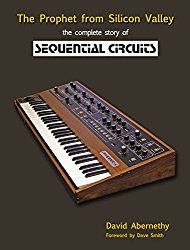
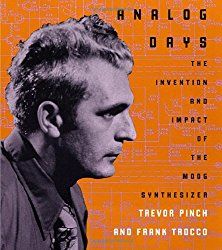
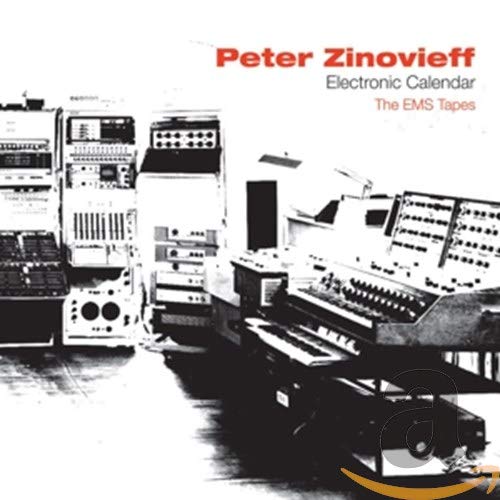
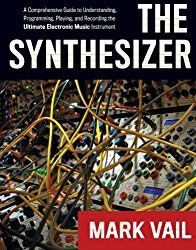

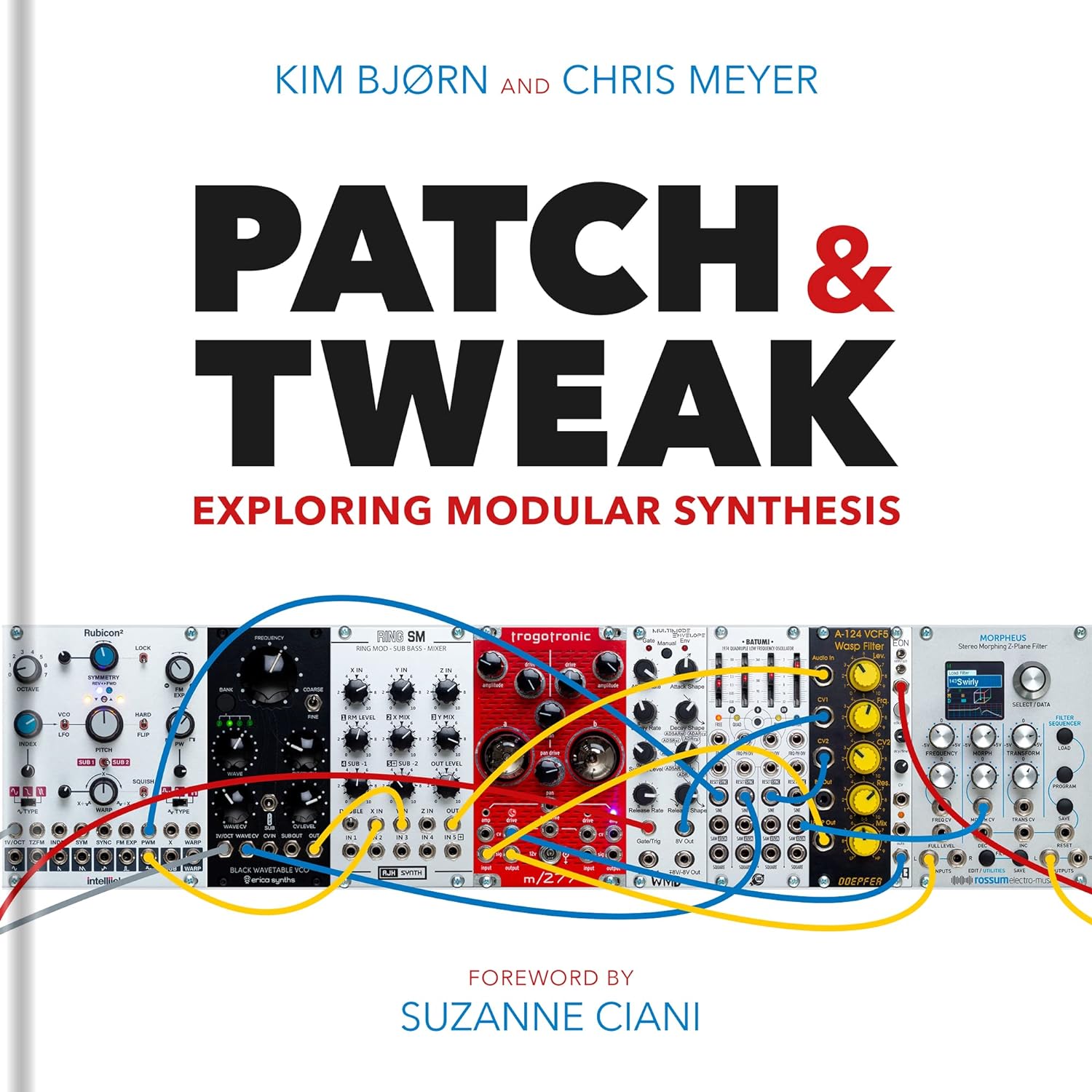
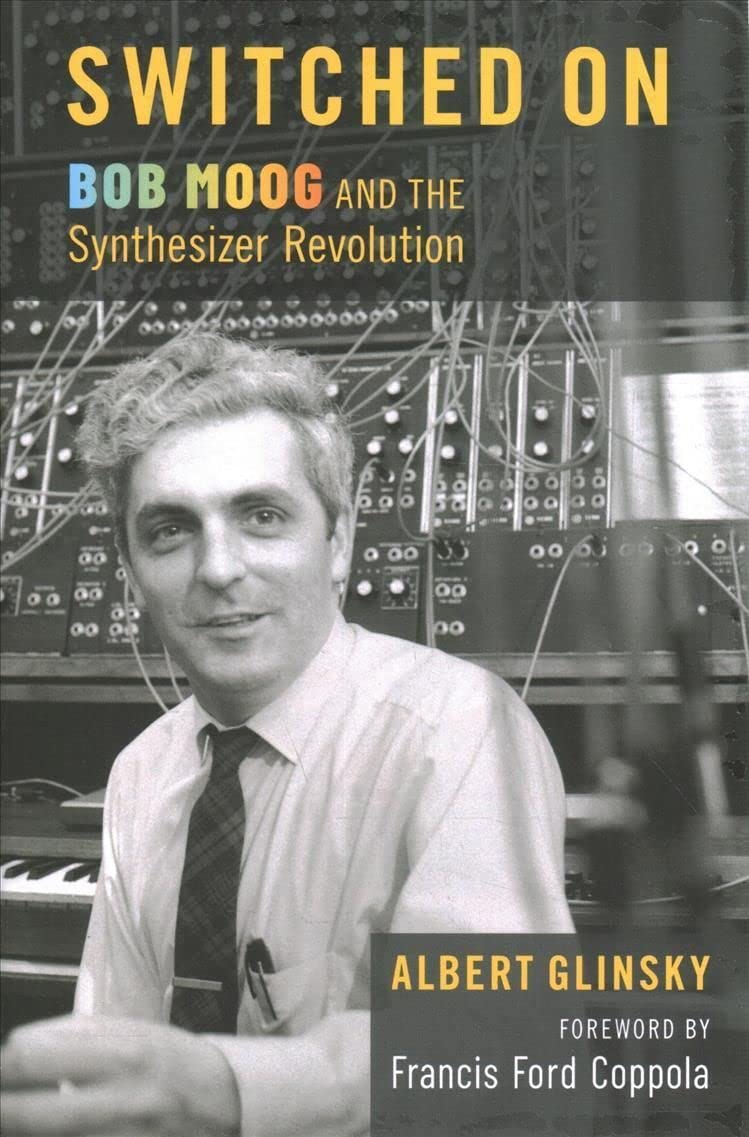
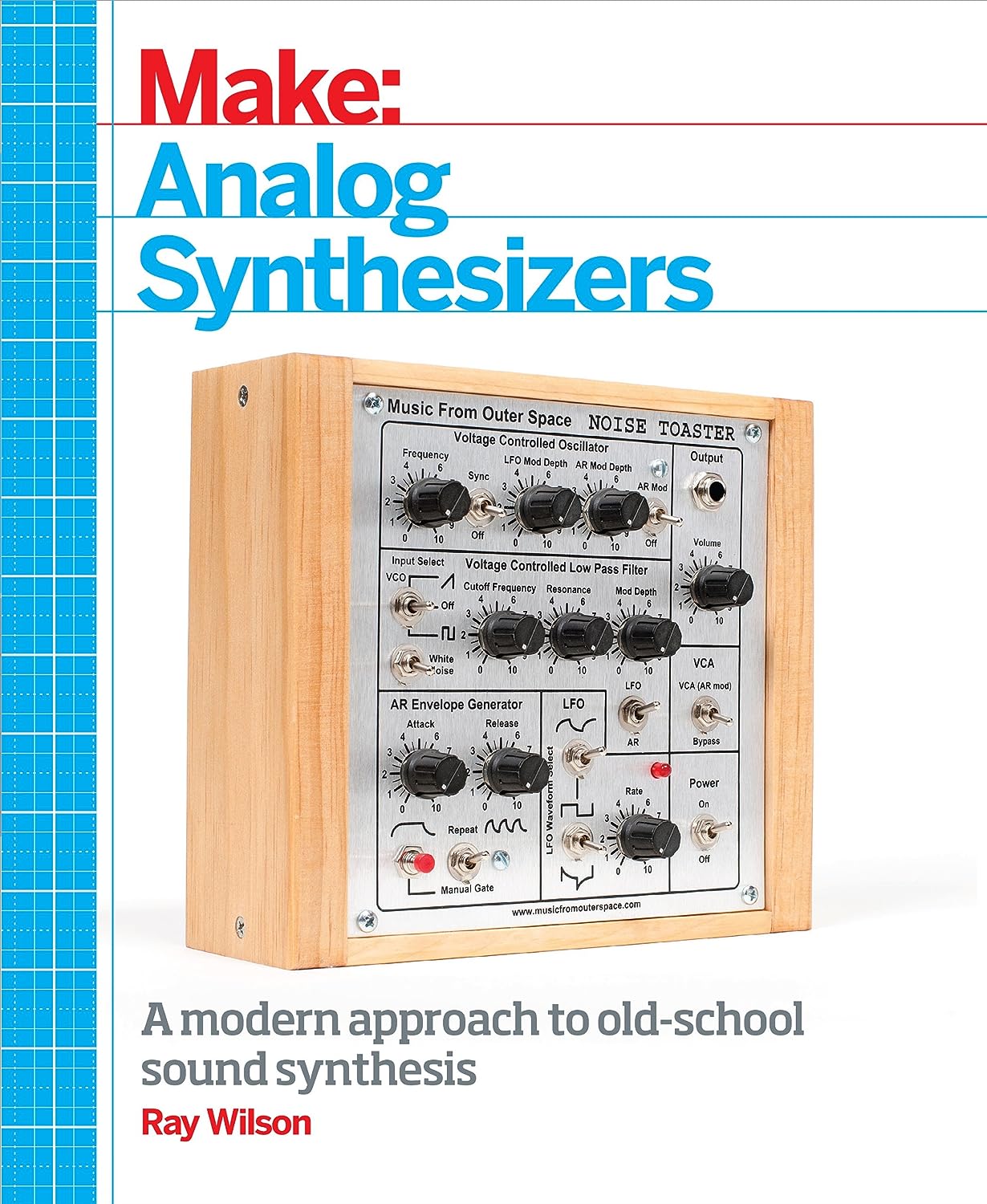
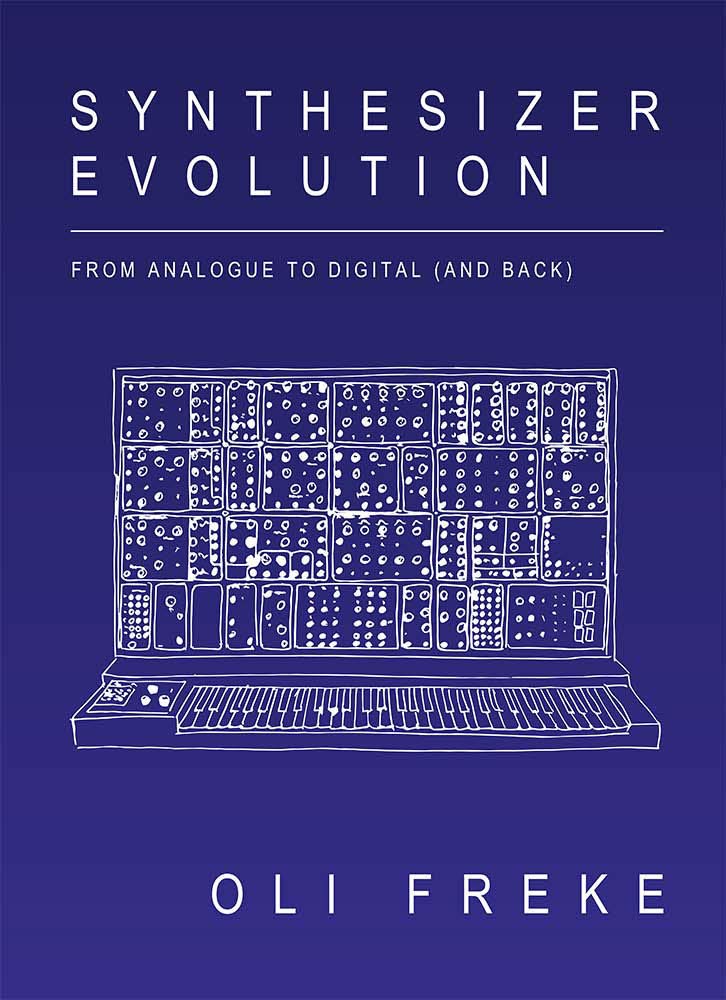

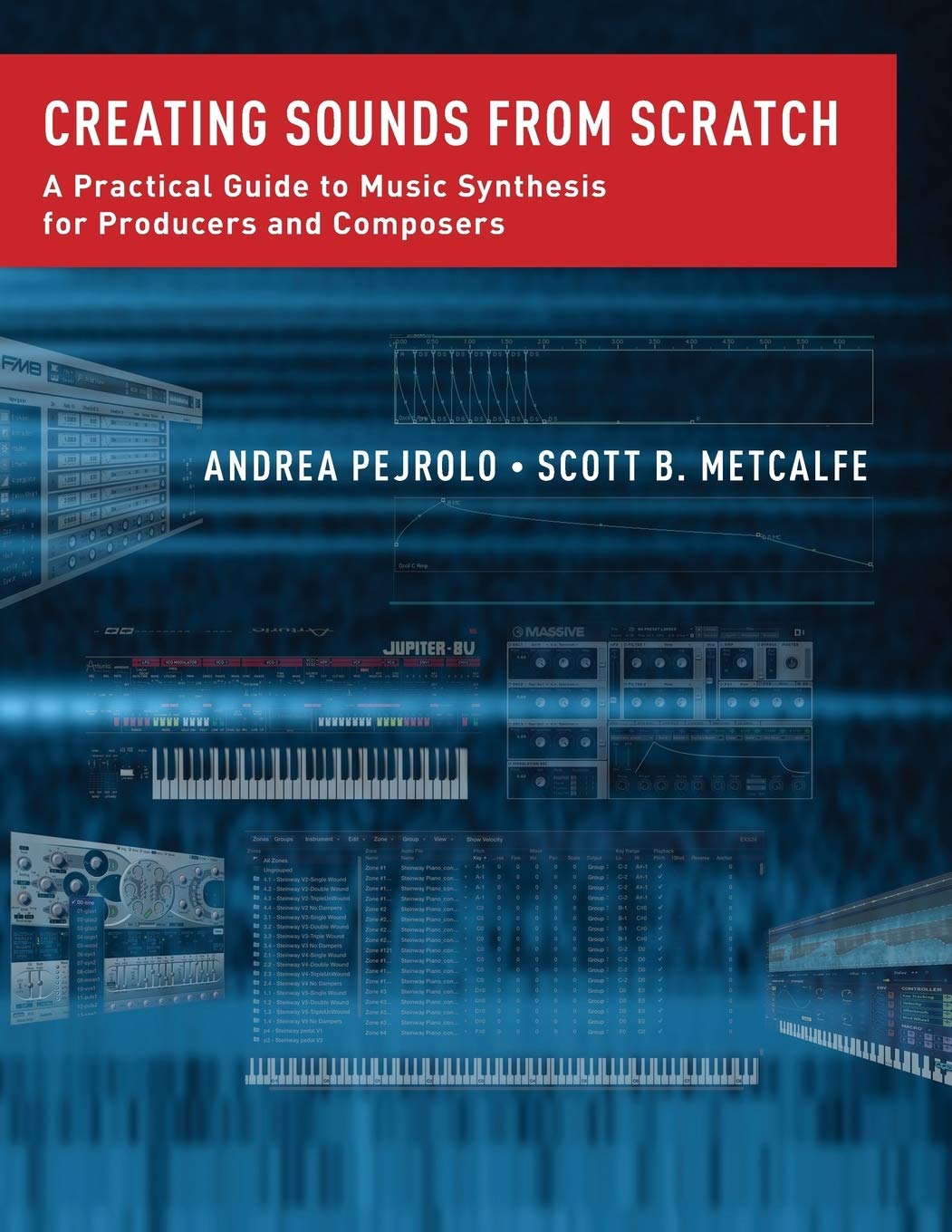


© Matrixsynth - All posts are presented here for informative, historical and educative purposes as applicable within fair use.
MATRIXSYNTH is supported by affiliate links that use cookies to track clickthroughs and sales. See the privacy policy for details.
MATRIXSYNTH - EVERYTHING SYNTH













© Matrixsynth - All posts are presented here for informative, historical and educative purposes as applicable within fair use.
MATRIXSYNTH is supported by affiliate links that use cookies to track clickthroughs and sales. See the privacy policy for details.
MATRIXSYNTH - EVERYTHING SYNTH
























